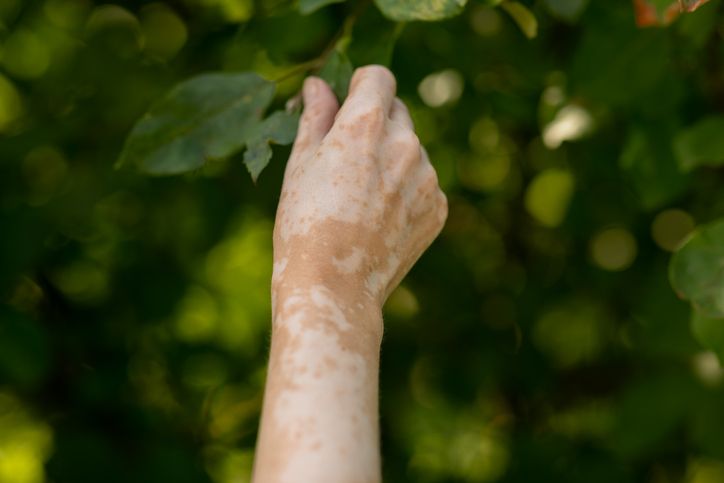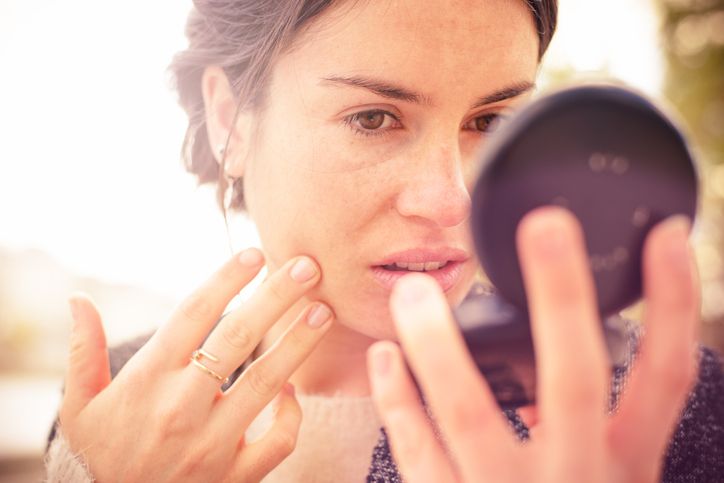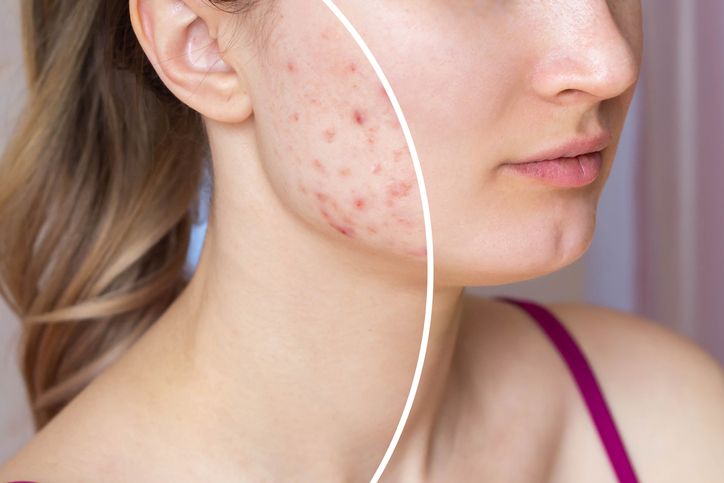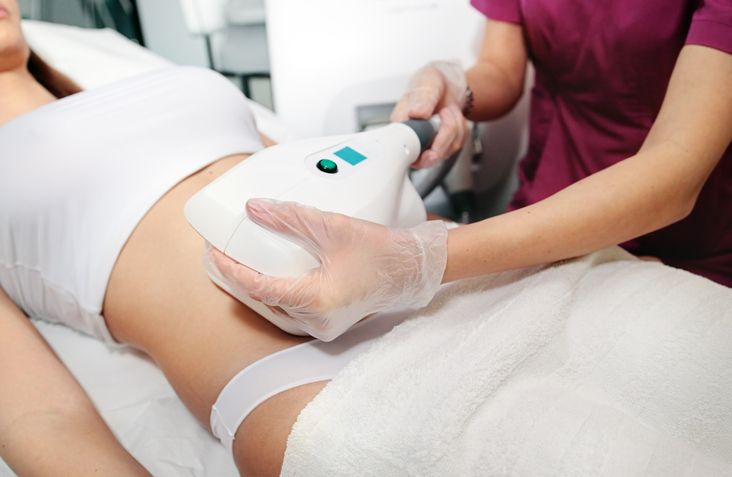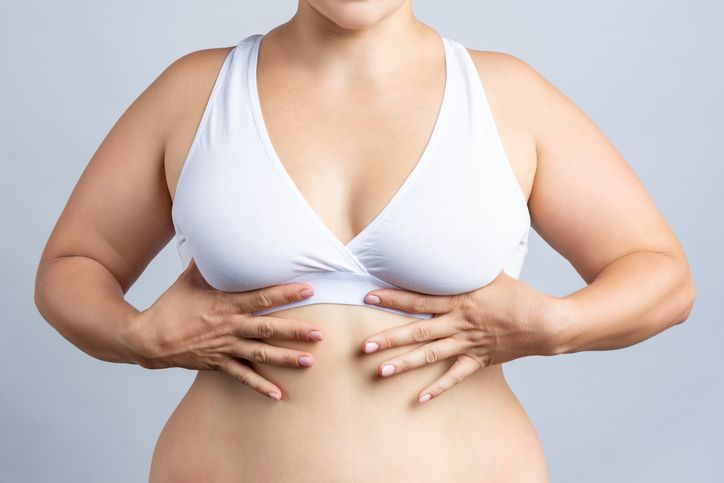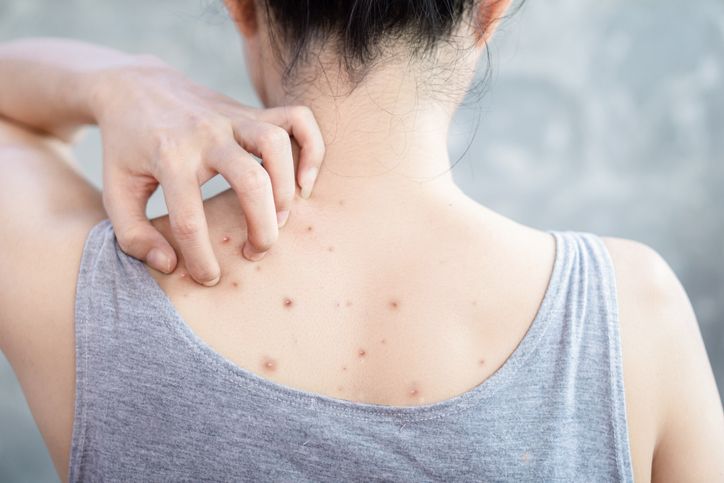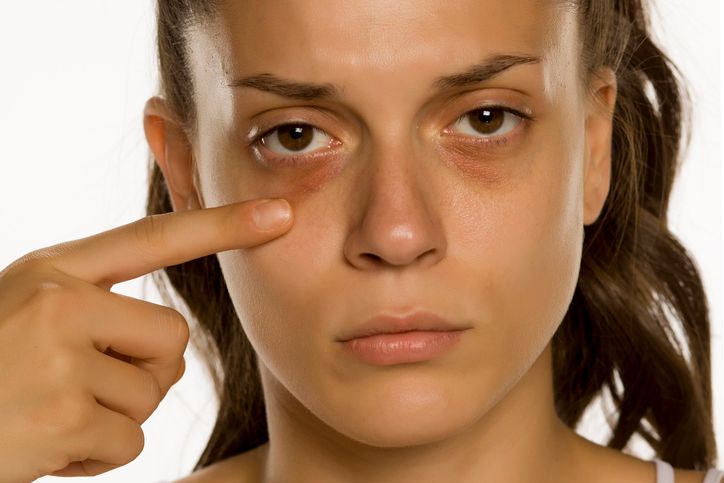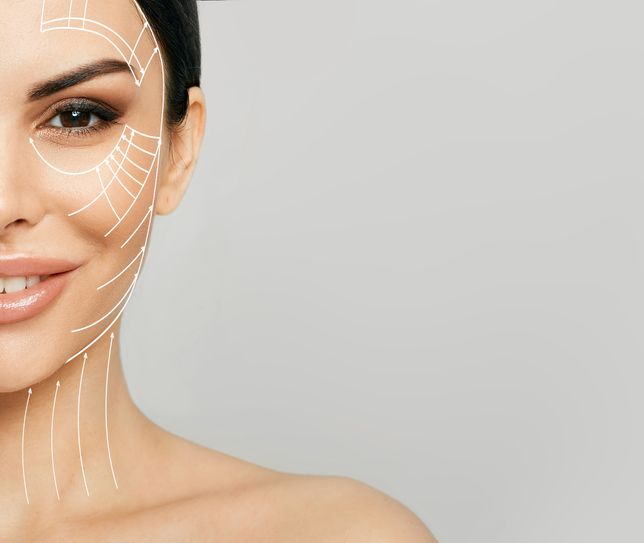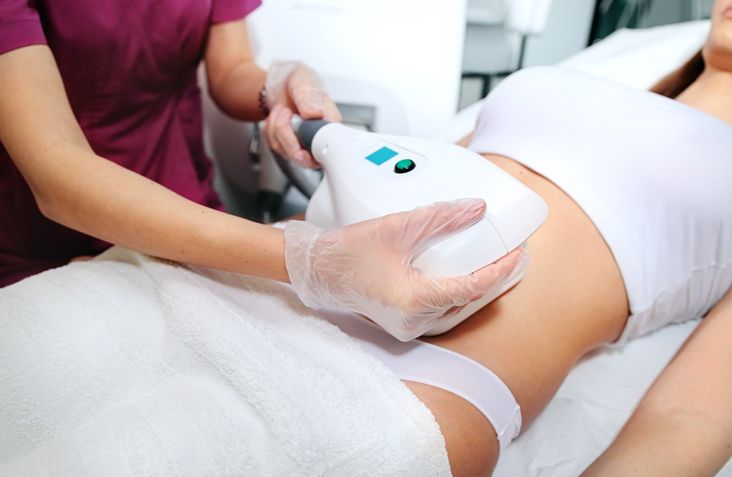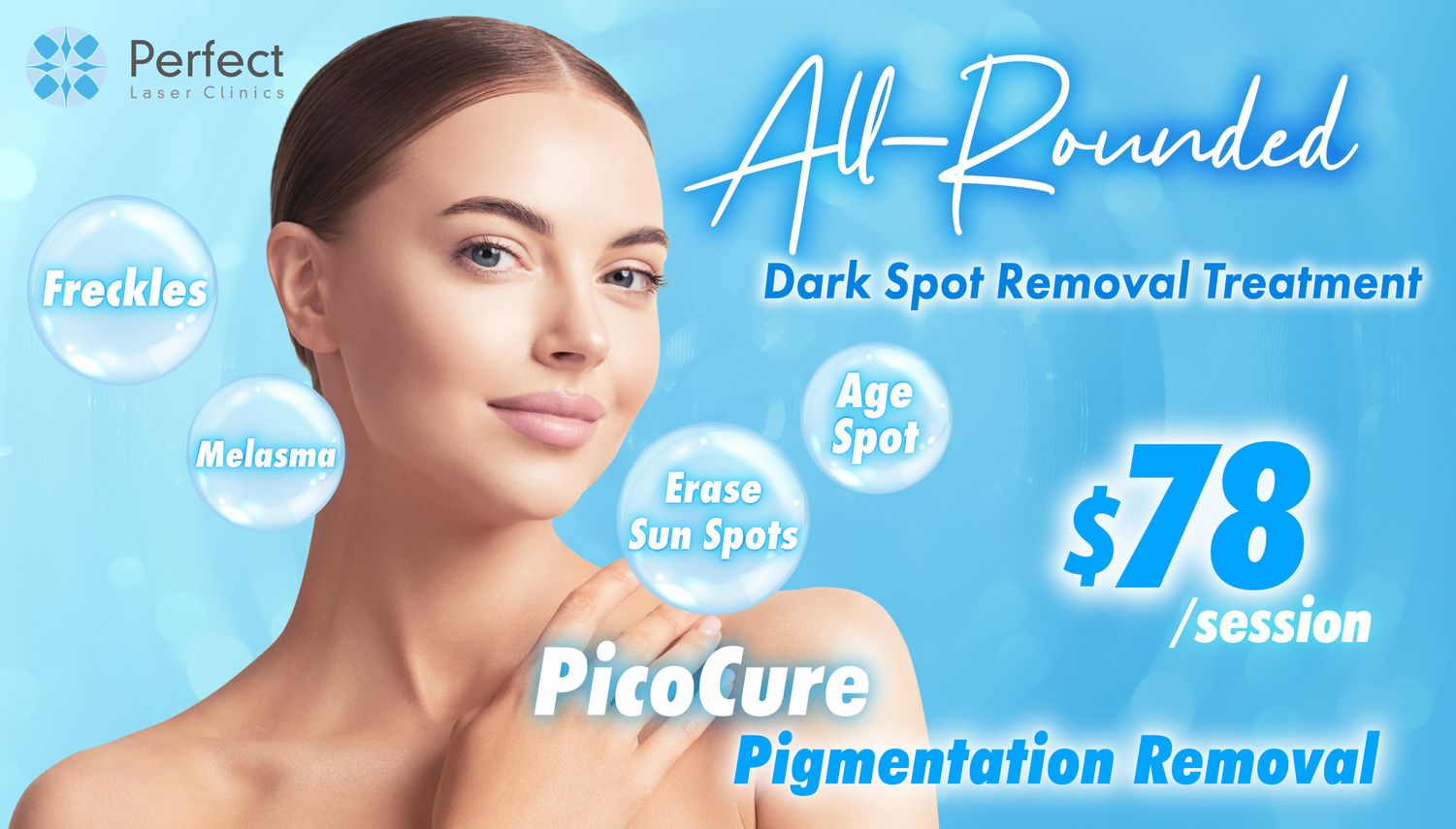
Book Now to Experience
PicoCure Pigmentation Removal Treatment
1 Minute Self-Registration
Date should not be before minimal date
Author: Sophia Man|Updated: 4 June 2024
Hyperpigmentation is commonly manifested by discolouration all around the mouth. These darkening spots of the epidermis appear in small sections and can appear on any part of the skin. The discolouration is caused by an increase in melanocytes in the epidermis. While hyperpigmentation is generally not dangerous, it can be caused by fundamental medical issues, lifestyle habits, and drugs. Dark spots do not always necessitate therapy, although, given the size of the patches, many individuals may find the skin darkening irritating. In this article, we will be looking into who is more susceptible to pigmentation around the mouth and the causes of discolouration. We will also dive in-depth into melasma moustache and the treatment options available. These treatment methods include the Picocure Pigmentation Removal Treatment – a one-of-a-kind laser facial for pigmentation that uses 4 different wavelengths to remove dark patches around the mouth!

1
Discolouration Around the Mouth: Who Gets Them?
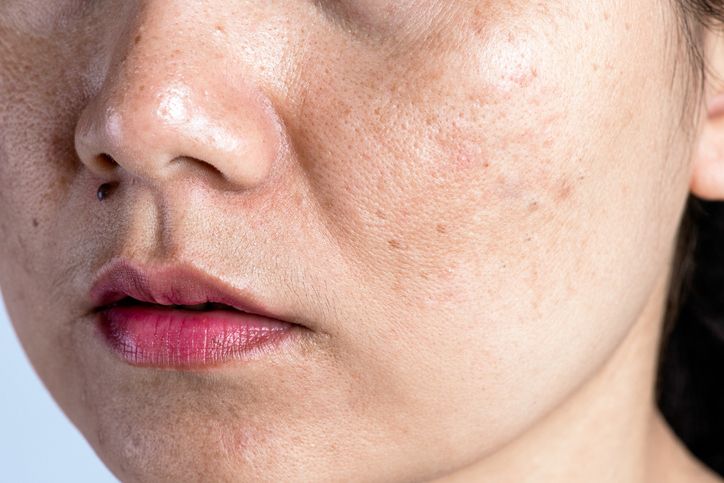
Individuals with dark skin are much more vulnerable to hyperpigmentation in nature. This is due to the increased rate of pigment formation than in light skin.
As you get older, you may discover more blotches on your face, breast, as well as other parts of the body that is exposed to ultraviolet radiation. If you do not apply sunscreen throughout this region, you're more likely to get skin pigmentation from UV exposure.
In the summer, you may find that yellowing all around the mouth is much worse. This is most probably caused by increased sunlight exposure, which could also accelerate melanin creation and make pigmentation increasingly visible.


2
What Are the Causes of Skin Discoloration Around the Mouth?

Complications of prescription
Although contraceptive pills can induce skin issues, certain medications can also increase the likelihood of pigmentation.
· biochemical replacement therapy, particularly oestrogen replacement therapy · doxycycline, a medication that might enhance sun intolerance · anticancer medicines
Sun exposure
Ultraviolet rays emitted from the sun and indoor tanning beds might raise the chance of developing dark patches as people age. Age spots often referred to as solar flares or liver spots, are examples of this. These are most frequently found on the forehead, chest, and forearms. Melasma may also be exacerbated by sun damage.
You are more vulnerable if you avoid applying sunblock to your lips and mouth. New research suggests that daylight also influences the formation of melasma.
Skin traumatism
After healing from a significant accident, acne outbreak, burns, or infections around the lips, people may acquire pigmentation in affected areas. The resulting darkening, also known as post-inflammatory hyperpigmentation, normally resolves after many months.
Lip licker's eczema or contacting eczema from lip glosses and personal care products can also produce this kind of discolouration.
Insufficiencies in vitamins
Skin pigmentation alterations could also be linked to vitamin deficits, such as vitamin B12 and D. According to a 2018 report, vitamin D inadequacies are common in persons with melasma.
Because the sun aggravates melasma, the vitamin D shortage is most probably due to sun protection.
Melasma moustache
Dark brown and greyish brown areas characterise Melasma on the head, cheekbones, and top lip. They are usually brought on by physiological alterations in women. These could happen when pregnant, in addition to while using contraception tablets (tablet contraceptive) or hormonal therapy.
Melasma is most commonly found on the face, particularly on the top mouth and chin, in addition to the cheekbones, nose, and head. Melasma moustache is melasma that forms on the upper lip.

3
What Are the Causes of Melasma Moustache?

According to an interview done by Verywell, Dr. Susan Massick, board-certified dermatologist and associate professor of dermatology at the Ohio State University College of Medicine said that melasma occurs when there is increased activity of melanocytes—cells that produce the pigment called melanin—in the skin.
Several variables, according to her, can lead to this melanocyte activation, which includes:
· Hormonal shifts (pregnancy and oestrogen-containing contraceptive pills) · Sunlight exposure · Genetic factors · Pharmaceuticals · Other system disorders, such as thyroid difficulties
As per Marisa Garshick, MD, FAAD, a board-certified dermatologist at MDCS Dermatology in New York, having even one of these characteristics can enhance one's chances of developing melasma or a melasma moustache. Melasma moustache can be mistaken for skin cancer but it is best to speak with our dermatologist before concluding.
For instance, if a person has a variation in chemicals such as oestrogen or progesterone because of child-bearing or the use of hormonal contraceptives and gets lots of ultra-violet (UV) radiation, it may activate melanocytes to increase melanin in sun-exposed areas of the skin. This can induce skin darkening and pigmentation, as well as the production of melasma regions.
If you simply have hyperpigmentation just above the lips, you should reconsider your skin care techniques, including hair removal treatments. Dr. Rebecca Marcus explains that hair removal regularly causes melasma outbreaks in the top lip region. Certain haircare treatments, either laser (heat + light) or mechanical stress from wax or plucking, can trigger inflammation, which can contribute to a melasma flare-up.


4
Are There Other Symptoms That Accompany a Melasma Moustache?

There are no other nonspecific symptoms with a melasma moustache. It does not sting, and it causes no discomfort or swelling. You may see other browned areas on your face if you've got a melasma moustache.
Melasma only appears on solar-exposed skin. Melasma is commonly found in the following areas:
· cheekbones · head · arch of the nose · jaw · collar · arms
Can You Prevent Melasma Moustache?
According to Dr. Mary Stevenson, a dermatologic surgeon at NYU Langone Health and an associate professor at the NYU Grossman School of Medicine, patients can prevent the illness by eliminating or minimizing sunlight exposure, as well as practising safe habits which include:
· Applying sunblock, particularly on the neck and face · Limiting the sun during peak times, in addition to other kinds of exposure to light, such as sunbeds · Making use of equipment such as broad-brimmed caps, sunglasses, and umbrella
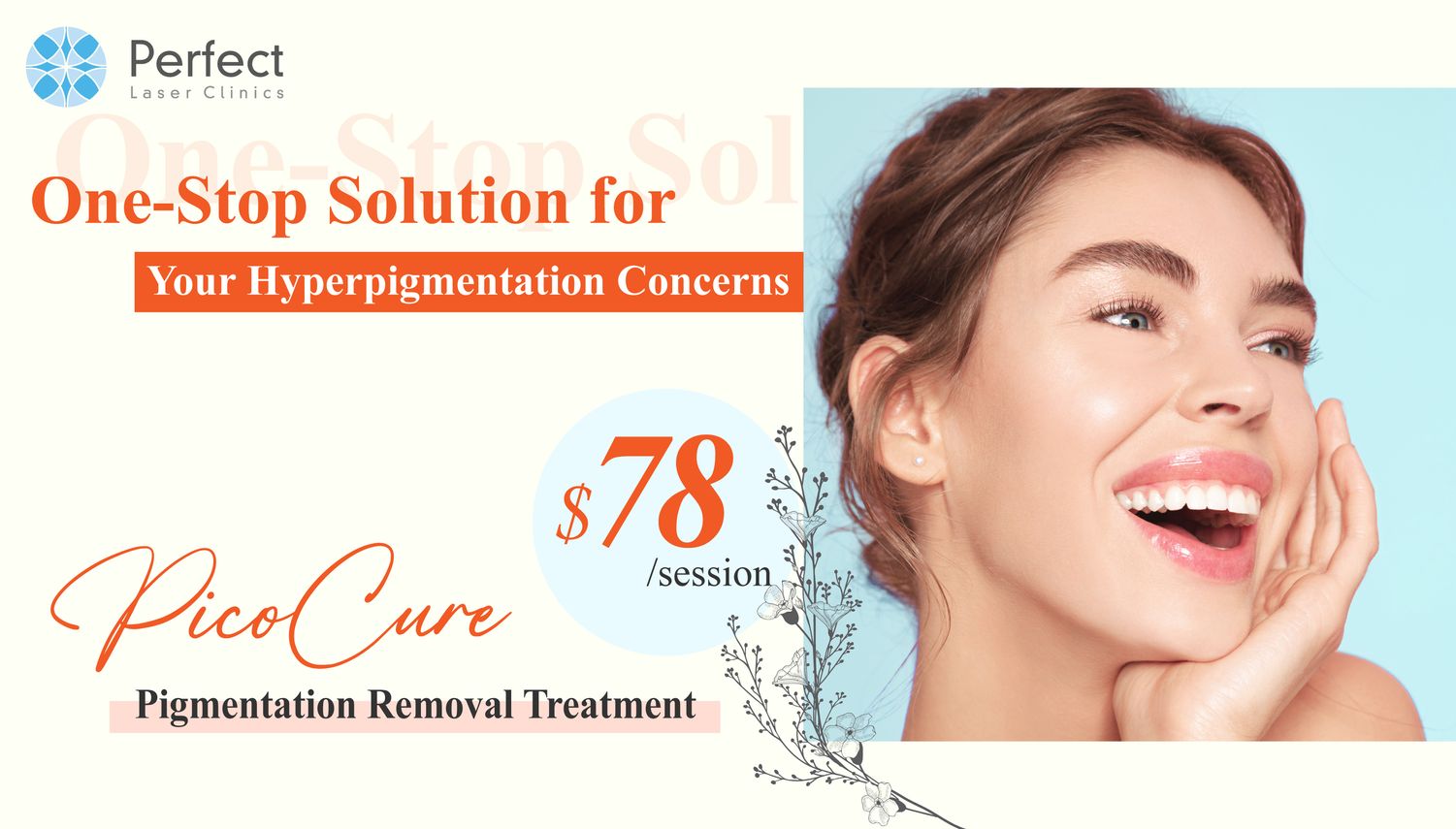
Book Now to Experience
PicoCure Pigmentation Removal Treatment
1 Minute Self-Registration
Date should not be before minimal date

5
What Are the Treatment Methods to Remove Melasma Moustache?

If you get a melasma moustache while expecting, it may go away by itself when you're no longer with a child. A melasma moustache induced by contraceptive pills or hormone treatments may also fade if the drug is stopped.
In some cases, a melasma moustache can endure for years if not addressed. Also with therapy, melasma might take several months to entirely disappear. To cure a melasma moustache, you must be patient and committed to eliminating potential causes.
Remove trigger points
When the doctor has determined that you suffer from melasma moustache and not a different ailment, he or she will propose lifestyle changes to avoid any stressors that could be creating the melasma spots.
This involves using a sun protector throughout the year-long to prevent UVA and UVB exposure to radiation. Inorganic sunscreens with iron oxide are chosen because they prevent light waves, which could also worsen melasma.
Heat, including such grilling over a steaming and heaty stove, can also cause melasma and ought to be prevented if at all feasible. Using wide-brimmed sun hats also can prevent direct sunlight off the face. You should also think about switching to a non-hormonal contraception option, like a copper IUD.
Contact with sunshine may activate some fragrances, cosmetics, and lotions in certain individuals. This is referred to as a phototoxic response. Melasma can be caused by a phototoxic response in some cases. Discovering and removing goods that respond to sunshine may be difficult.
External therapies
A cosmetic skin whitening lotion called hydroquinone is frequently prescribed as the initial therapy. Dermatologists may administer medication containing hydroquinone in addition to certain other substances, such as azelaic acid, retinoid, low-dose drugs, Vitamin C, transaminase and kojic acid. After only about one month of using it, topical therapies including hydroquinone can begin to lessen melasma moustache.
Chemical peels and other face treatments
If conventional therapies fail after many months, your physician may advise you to undergo a glycolic or salicylic acid-based cosmetic peel. Most melasma peelings include a combination of acids, including modest concentrations of TCA (Trichloroacetic Acid).
These chemical peels can aid some individuals but may aggravate melasma in many others. You and your doctor may determine whether peels are appropriate for your type of skin.
To begin, a fortnightly shallow, minimal-concentration chemical peel may be performed. In some cases, your doctor may advise you to increase the amount and intensity of the treatments. You may also be advised to use a whitening product, such as hydroquinone, in conjunction with the skin peeling treatment.
Other laser facial for pigmentation, including as microdermabrasion and micro-needling, have yielded inconclusive outcomes for melasma moustache. They, like laser facial for pigmentation, should only be performed by a skilled healthcare expert.
Thankfully, the Picocure Pigmentation Removal Treatment is done by professionally trained doctors after a thorough skin analysis that studies your skin. This allows us to customise the perfect laser facial for pigmentation that removes dark patches and melasma moustache for a bright and clear face!


6
Picocure Pigmentation Removal Treatment: Laser Facial for Pigmentation Removal That Really Works!

The Picocure Pigmentation Removal Treatment at Perfect Laser Clinics Australia is a smarter option than choosing another generic laser facial for pigmentation. This is because the Picocure Pigmentation Removal Treatment uses picosecond and nanosecond technology that comes in four high-frequency wavelengths to track and remove melanin from the upper lip along with other facial areas. These four wavelengths include:
· 1064nm · 650nm · 585nm · 532nm
This laser facial for pigmentation uses nanosecond wavelengths that deliver short bursts of energy to break down the larger and darker melanin particles. Then, the picosecond laser reduces these larger melanin particles to smaller particles which are then released via the metabolic system.
The Picocure Pigmentation Removal Treatment’s high-intensity laser pulses stimulate collagen production to repair damaged and aging connective tissues. It also helps fill in bumps, acne scars and large pores to give an even smooth skin tone.
Unlike generic laser treatments, this laser facial for pigmentation travels 1000 times into the epidermis and dermis layers of the skin. This means that the laser energy penetrates and leaves the skin in a brief moment, leaving no room for skin redness and skin inflammation. And it only takes 30 minutes to complete one session!

7
The Final Note

Melasma moustache along with discolouration around the mouth that comes in grayish brown patches can be a cause of concern for many people. But don’t worry, we have just the laser facial treatment to reduce and remove hyperpigmentation around the mouth - Picocure Pigmentation Removal Treatment!
This laser facial for pigmentation treatment destroys all melanin particles, stimulates collagen production and repairs connective skin cells to give a bright, even and smooth upper lip.
So if you want to achieve brighter and more radiant skin on your upper lip, book your appointment today!
FAQ
What are the causes of hyperpigmentation around the mouth?
Common causes of hyperpigmentation can be due to excessive sun exposure, medical side effects, genetic reasons and more.
Does the Picocure Pigmentation Removal Treatment use 2 different wavelengths?
The Picocure Pigmentation Removal Treatment uses four various wavelengths that are of picosecond and nanosecond technology. This laser facial for pigmentation helps to penetrate deep into all the skin layers and remove all melanin particles from the body via metabolic drainage.
Who is suited for the Picocure Pigmentation Removal Treatment?
This laser facial and pigmentation is suited for individuals with pigmentation issues around the face and people with sensitive skin. These include: · Acne scars · Age spots · Ice-pick scar · Melasma (around the face) · Freckles · Acne spots · Post-inflammatory hyperpigmentation · Sunspots · Dull skin
How many sessions will I need to see effective results?
For optimum results, customers will need under 3 to 6 sessions to remove shallow and deeper melanin particles.
Is the Picocure Pigmentation Removal Treatment painful?
This laser facial for pigmentation does not cause burning or skin inflammation as it does not use any sedation, injections or topical anaesthesia. You can return to your regular routines almost immediately.
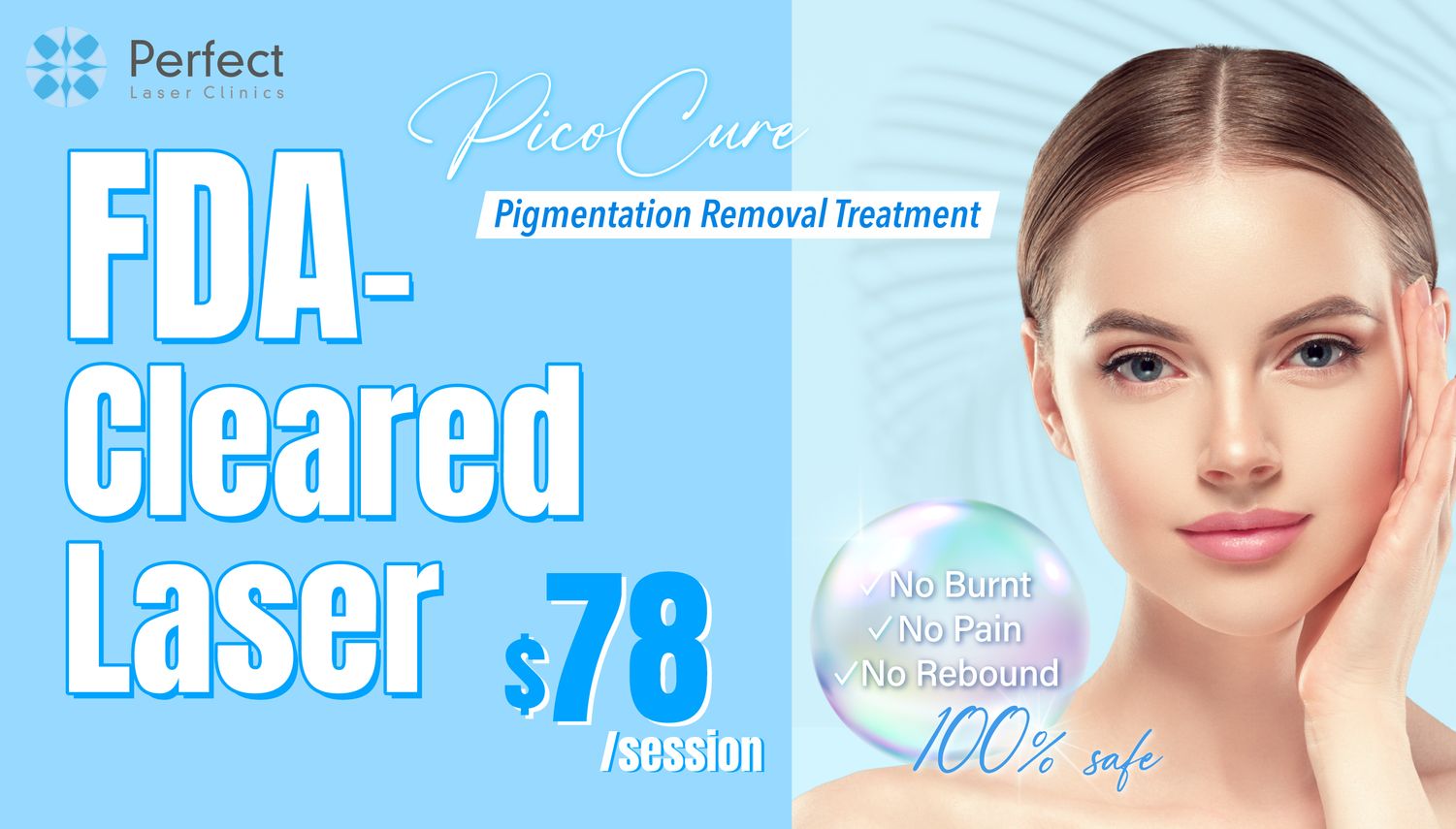
Book Now to Experience
PicoCure Pigmentation Removal Treatment
1 Minute Self-Registration
Date should not be before minimal date
Recommended Articles
COPYRIGHT©Perfect Laser Clinics 2025 ALL RIGHTS RESERVED










